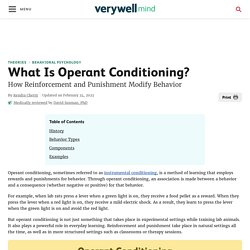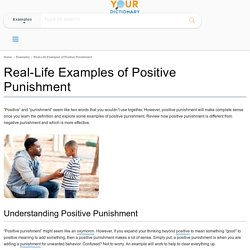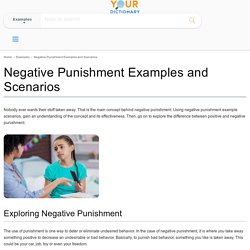

Burrhus Frederic Skinner believed that the mind was important. He felt that behavior could be observed so that reactions could be studied in their complexity. In the 1920s, classical conditioning was the emphasis of the behaviorism theory, but BF Skinner felt like the answers provided were too simplistic. This led him to develop his theory on operant conditioning.
In operant conditioning, positive or negative reinforcement and positive or negative punishment are used to influence behavior. The definition of positive and negative do not mean good and bad. Positive means we add something and negative means we take away something.
Reinforcement means we increase behavior and punishment means we decrease behavior. That is, positive and negative reinforcers actually increase the likelihood to happen of a behavioral response. As for positive and negative punishers decrease the likelihood of a behavioral response.
Reference
Zimbardo, P.G., Johnson, R. L., & McCann, V. (2018). Psychology: Core concepts (8th ed.).
Pearson.
Youtube. BF Skinner's Operant Conditioning Chamber - Saieed Hasnoo. What Is Operant Conditioning and How Does It Work? Operant conditioning, sometimes referred to as instrumental conditioning, is a method of learning that employs rewards and punishments for behavior.

Through operant conditioning, an association is made between a behavior and a consequence (whether negative or positive) for that behavior.1 For example, when lab rats press a lever when a green light is on, they receive a food pellet as a reward. When they press the lever when a red light is on, they receive a mild electric shock. As a result, they learn to press the lever when the green light is on and avoid the red light.
What is Operant Conditioning and How Does It Work ? Positive Reinforcement - Tips for teaching and parenting. Positive Reinforcement. Negative Reinforcement. Negative Reinforcement. Real-Life Examples of Positive Punishment. “Positive” and “punishment” seem like two words that you wouldn’t use together.

However, positive punishment will make complete sense once you learn the definition and explore some examples of positive punishment. Review how positive punishment is different from negative punishment and which is more effective. Positive Punishment. Negative Punishment Examples and Scenarios. Nobody ever wants their stuff taken away.

That is the main concept behind negative punishment. Using negative punishment example scenarios, gain an understanding of the concept and its effectiveness. Negative Punishment. Schedules of Reinforcement. Schedules of Reinforcement. Youtube. The importance of behavior shaping. Reinforcement Vs. Punishment for Kids (And Examples) As they grow, our children learn which behaviors are acceptable and which are not.

They learn this through a process of cause and effect. Here’s an example of how this works: When you touch something hot, it burns and you take your hand away. Reinforcement Vs. Punishment.